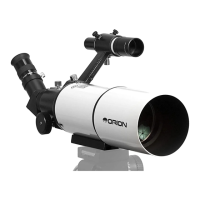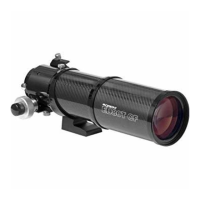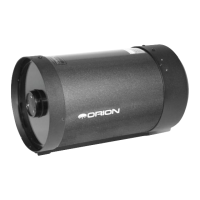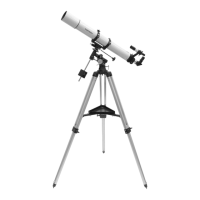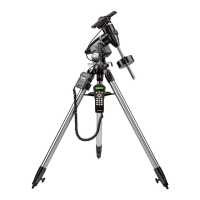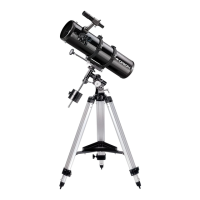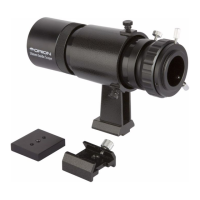8
somewhere near the red dot.
5. You’ll want to center the target object on the red dot. Without moving the
telescope, use the nder scope’s vertical and horizontal adjustment knobs
(shown in Figure 5) to position the red dot on the object.
6. When the red dot is centered on the distant object, check to make sure the
object is still centered in the telescope’s eyepiece. If it isn’t, re-center it then
adjust the nder scope’s alignment again. When the object is centered in
the telescope eyepiece and on the nder scope’s red dot, the nder scope
is properly aligned with the telescope. The red dot nder scope’s alignment
should be checked before every observing session.
At the end of your observing session, be sure to slide the power switch to OFF to
preserve battery life.
4. Using your telescope
Choosing an Observing Site
When selecting a location for observing, get as far away as possible from direct
articial light such as street lights, porch lights, and automobile headlights. The
glare from these lights will greatly impair your dark-adapted night vision. Avoid
viewing over rooftops and chimneys, as they often have warm air currents rising
from them. Similarly, avoid observing from indoors through an open (or closed)
window, because the temperature difference between the indoor and outdoor air
will cause image blurring and distortion.
If at all possible, escape the light-polluted city sky and head for darker country
skies. You’ll be amazed at how many more stars and deep-sky objects are visible
in a dark sky!
Cooling the Telescope
All optical instruments need time to reach “thermal equilibrium.” The bigger the
instrument and the larger the temperature change, the more time is needed. Allow
at least 20 minutes for your telescope to acclimate to the temperature outdoors
before you start observing with it.
Let Your Eyes Dark-Adapt
Don’t expect to go from a lighted house into the darkness of the outdoors at night
and immediately see faint nebulas, galaxies, and star clusters—or even very many
stars, for that matter. Your eyes take about 30 minutes to reach perhaps 80% of
their full dark-adapted sensitivity. As your eyes become dark-adapted, more stars
will glimmer into view and you’ll be able to see fainter details in objects you view
in your telescope.
To see what you’re doing in the darkness, use a red-ltered ashlight rather than
a white light. Red light does not spoil your eyes’ dark adaptation like white light
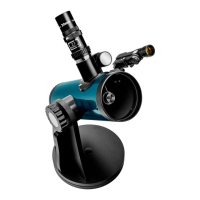
